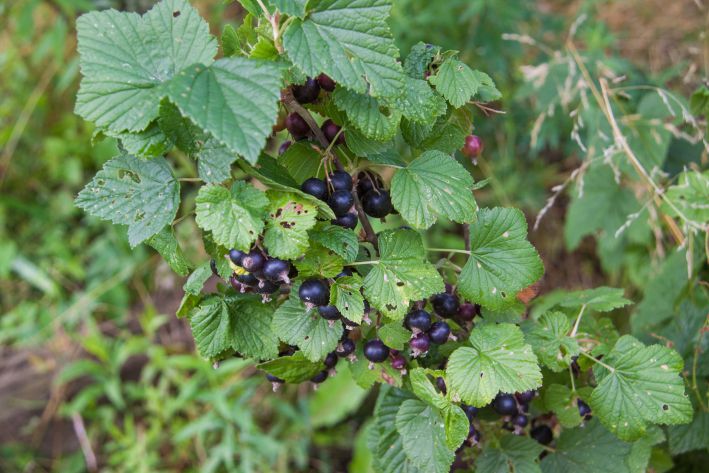How to plant currants in a summer cottage: choosing a place
Currants are unpretentious and at the same time give an invariably rich harvest.
In addition, its seedlings are inexpensive and are sold literally everywhere during the season.
Perhaps this is why gardeners are so eager to plant it on their plots. Let's find out how exactly to plant currant bushes and care for them in order to get a large harvest, says Anastasia Kovrizhnykh .
Selecting a landing site
When choosing a place to plant currants, you need to consider the following criteria:
Lighting. Currants are somewhat capricious in this regard. In conditions of strong shading, their yield decreases and their susceptibility to diseases increases.

And under direct sunlight the leaves burn badly and the tops dry out. Also, small roots dry out from overheating. Therefore, it is advisable to choose a place for the bush near buildings or trees.
Humidity. Long-term stagnation of water has a negative effect on the condition of the bush, but short-term is even useful. But if the water washes away the soil, it will need to be added.
Windiness. In windy areas, currants bear fruit poorly.
Requirements for seedlings
Despite the fact that there are several options for propagating currants (green or woody cuttings, layering or seedlings), the latter is the most popular.
If you are going to buy seedlings, pay attention to the following points:
Usually seedlings are sold with open roots. On the one hand, this is very convenient, as it allows you to assess the condition of the root system.
On the other hand, exposed roots can dry out, which leads to their death. Therefore, it is good if they are in a soil slurry or covered with damp burlap.
The shoots should be straight and flexible, about 35 cm high, with several buds.
Roots and shoots should not have any damage, signs of rotting or drying out.
Landing time
You can plant currants in spring or autumn.
Spring. Planting should be done in spring when the threat of frost has passed. It would seem convenient: there is no risk of freezing the seedling. On the other hand, you need to do it before the buds open. Bushes planted in spring develop later.
Autumn. Planting period: September-early November. Bushes planted in autumn quickly adapt and begin to actively develop in spring. However, in case of little snow in winter, there is a high probability of damage to the root system.
As practice shows, autumn planting is more preferable.
Care
Regular care will significantly increase the yield of the currant bush.
Loosening. It should be done twice a year: in the fall (after harvesting) and in the spring (after fertilizing).
Weeding. This should be done as needed. You can use a hoe or weed manually. The torn grass should be left near the bush.
Watering. Currants love water, so they require regular watering. Each bush needs about 15 liters of water.
Top dressing. If fertilizers were applied during planting, the next top dressing can be done only in the third year. Before loosening, a mixture of compost (5 kg), superphosphate (20 g) and wood ash (30 g) should be added under the bush. This should be done annually. Increasing the dosage is not recommended. For early (spring) top dressing, you can use commercial complex fertilizers.
Pruning. It is necessary to cut out old broken shoots. And in late autumn or early spring, prune new shoots as much as possible, leaving 4 most developed ones.
Following these simple rules will help you collect a rich harvest of delicious ripe berries in the fall.
Earlier we wrote about what you need to know about planting seedlings .
